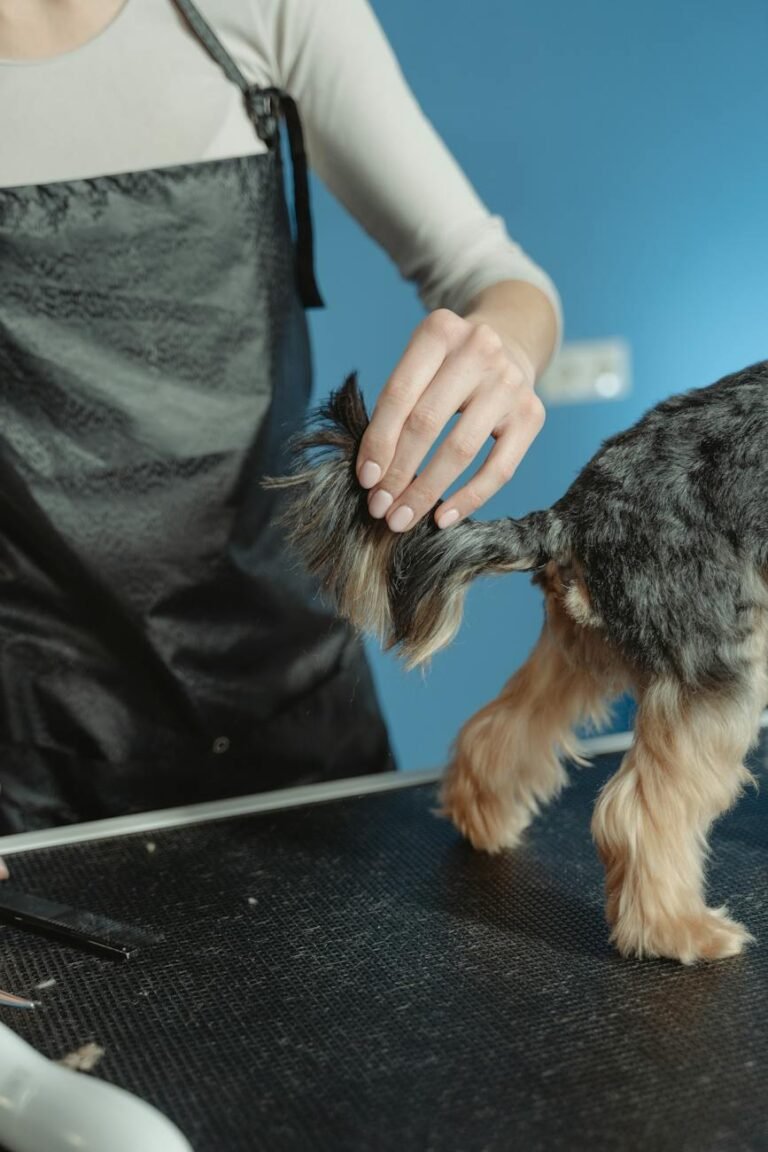Cracking the Code: Understanding Canine Body Language
Understanding Canine Body Language
To truly understand your furry friend, it’s essential to grasp the intricacies of canine body language. Dogs rely heavily on their body language to communicate their emotions, intentions, and needs. By learning to interpret their signals, you can better understand their behavior and foster a stronger bond. In this section, we’ll explore the importance of canine body language and how dogs communicate through it.
The Importance of Canine Body Language
Canine body language is a primary means of communication for dogs, allowing them to convey their intentions and emotions to both humans and other dogs (Train Canine). By paying attention to your dog’s body language, you can gain insight into their feelings, whether they’re relaxed, fearful, excited, or even aggressive. Understanding their body language helps you respond appropriately and appropriately meet their needs.
How Dogs Communicate Through Body Language
Dogs utilize a combination of facial expressions, body postures, and vocalizations to communicate their emotions and intentions. Each element of their body language plays a role in conveying a specific message. For example, a relaxed and loose body posture with a wagging tail indicates a happy and friendly dog, while a stiff body posture with raised hackles may signal aggression or fear.
To accurately interpret your dog’s body language, it’s important to consider the context and other factors such as breed, individual temperament, and previous experiences (VCA Hospitals). Dogs have a wide range of facial expressions, including raised eyebrows, wide eyes, and open mouths, which can convey various emotions. By observing these cues, you can gain valuable insights into your dog’s emotional state.
By understanding canine body language, you can better communicate with and respond to your furry companion. It allows you to recognize when they are happy, fearful, or in need of comfort. Additionally, it helps you identify potential signs of aggression or stress, allowing you to take appropriate measures to ensure the safety and well-being of both yourself and your dog. For a more comprehensive understanding of dog behavior, consider exploring our article on understanding dog behavior.
Remember, dogs are individuals, and their body language may vary. Take the time to familiarize yourself with your dog’s unique expressions and behaviors. The more you learn to interpret their body language, the stronger your bond will become, leading to a happier and more fulfilling relationship with your beloved canine companion.
Signs of Stress in Dogs
As a responsible dog owner, it’s important to be able to recognize signs of stress in your furry companion. Dogs communicate their emotions and feelings through various body language signals. Understanding these signs can help you address their needs and provide a safe and comfortable environment for them. Here are some common signs of stress in dogs:
Yawning and Lip Licking
Yawning is not always a simple indication of fatigue in dogs; it can also be a sign of stress, especially when it occurs out of context or excessively. Similarly, dogs may exhibit lip licking or tongue flicking when they are stressed. These subtle signals of discomfort or anxiety are worth paying attention to (AKC).
Excessive Panting
Panting is a normal behavior for dogs, especially when they are warm or after physical exertion. However, excessive panting, even when the weather is not hot, can be a sign of stress. It may be accompanied by other signs of anxiety, such as pacing or whining. If you notice your dog panting excessively and there are no apparent reasons for it, it’s important to consider their overall behavior and environment (AKC).
Avoidance Behavior
Dogs may exhibit avoidance behavior when they are feeling stressed or uncomfortable. This can include hiding, moving away from people or other animals, or trying to seek isolation. If your dog is consistently avoiding certain situations or individuals, it may be a sign that they are experiencing stress. It’s crucial to respect their boundaries and provide them with a safe space where they feel secure (AKC).
By being aware of these signs of stress in dogs, you can help prevent and alleviate their anxiety. It’s important to remember that individual dogs may exhibit different behaviors, so it’s crucial to observe and understand your own dog’s unique body language. If you suspect your dog is stressed, consider consulting with a professional dog behaviorist or trainer to develop strategies to reduce their stress and create a harmonious environment for both you and your furry friend. For more information on understanding dog behavior, check out our article on interpreting dog behavior.
Interpreting Aggressive Body Language
When it comes to understanding your dog’s body language, it’s important to be able to recognize signs of aggression. Aggressive body language in dogs can indicate that they feel threatened, fearful, or are trying to assert dominance. By learning to interpret these signals, you can better understand your dog’s behavior and respond appropriately. Here are three key indicators of aggressive body language to look out for:
Raised Hackles
One common sign of aggression in dogs is raised hackles, where the hair on their back stands up. This can be an indication of fear or aggression. However, it’s important to consider other body language signals and the context in which it occurs. Raised hackles alone do not necessarily mean that a dog is aggressive, as it can also be a response to excitement or arousal. Pay attention to other cues, such as stiff body posture or growling, to get a more accurate understanding of your dog’s state of mind. For more information on understanding dog body language, visit our article on dog body language.
Stiff Body Posture
A dog displaying aggressive behavior may exhibit a stiff or rigid body posture. This can include standing upright, with their tail held high and stiff, and their ears alert. This type of body language is often associated with dominance and can indicate that the dog is asserting their position. It’s important to approach a dog with a stiff body posture cautiously and give them space, as they may perceive unfamiliar individuals or other dogs as a threat. For more insights into dominant behaviors in dogs, check out our article on dog behavior signals.
Dominant Behaviors
Dominant dogs may exhibit certain behaviors that establish their position in social interactions. These behaviors can include standing tall, walking with a proud and confident demeanor, and carrying themselves with dignity. Dogs displaying dominant behaviors may try to assert control in various situations, especially when interacting with other dogs. It’s essential to be aware of these behaviors and provide proper training and socialization to ensure a harmonious environment. To learn more about interpreting dog behavior, visit our article on interpreting dog behavior.
Understanding and interpreting aggressive body language in dogs is vital for maintaining a safe and healthy environment for both your dog and those around them. If you notice signs of aggression, it’s essential to address the underlying causes and consult with a professional dog trainer or behaviorist for guidance. By staying attentive to your dog’s body language and seeking professional assistance when needed, you can help your furry friend have a happy and well-adjusted life.
Reading Relaxed Body Language
When it comes to understanding your dog’s emotions and intentions, paying attention to their body language is crucial. A relaxed dog will exhibit specific signs that indicate they are comfortable and at ease. In this section, we will explore three key aspects of relaxed body language in dogs: loose body posture, relaxed facial expressions, and relaxed tail and ears.
Loose Body Posture
A relaxed dog will have a loose body posture, with their body appearing calm and at ease. Their muscles will be relaxed, and they will not exhibit any signs of tension or stiffness. A dog with a loose body posture will stand or lie down in a natural position, without any signs of rigidity or being on high alert. This indicates that the dog is content and not feeling threatened or stressed.
Relaxed Facial Expressions
A dog’s facial expressions can provide valuable insights into their emotional state. A relaxed dog will have a soft and relaxed facial expression, with no signs of tension or worry. Their eyes will be soft and gentle, without any intense staring or dilated pupils. Additionally, their mouth will be slightly open, with a relaxed jaw and no signs of bared teeth or excessive panting.
Relaxed Tail and Ears
The tail and ears of a dog can also indicate their level of relaxation. A relaxed dog will have a tail that is in a neutral position or gently wagging. The wagging tail should be loose and not stiff, indicating a happy and content state. Similarly, the ears of a relaxed dog will be in a natural position, neither pinned back nor erect. Relaxed ears suggest that the dog is calm and not feeling threatened.
It’s important to remember that these body language signals should be interpreted in context and in conjunction with other signals from the dog. Each dog is unique, and their body language can vary based on their individual personality and experiences. By familiarizing yourself with your dog’s specific body language, you can better understand their emotions and respond appropriately.
Understanding and interpreting your dog’s body language is a vital aspect of effective communication and building a strong bond with your furry friend. By paying attention to their loose body posture, relaxed facial expressions, and relaxed tail and ears, you can gain insights into their emotional state and ensure they feel safe and comfortable in their environment. For more information on interpreting dog behavior and body language, visit our article on dog behavior signals.
Key Body Language Signals
Understanding your dog’s body language is essential for effective communication and building a strong bond with your furry friend. Here are some key body language signals to watch out for when interpreting your pup’s behavior.
Tail Wagging
Tail wagging is a common form of communication in dogs, but it’s important to note that the meaning behind it can vary. A high, fast wag usually indicates excitement and eagerness, while a slow, low wag may indicate insecurity or fear (Source).
To better understand your dog’s tail wagging, observe other accompanying body language, such as the position of their ears and the overall posture. This will provide additional context and help you interpret what your dog is trying to convey.
For more information on dog tail wagging and its meanings, refer to our article on dog tail wagging meaning.
Dominant vs. Submissive Postures
A dog’s posture can provide valuable insights into their social status and intentions. Dominant dogs tend to carry themselves with a stiff body, a high and proud walk, and a rigid tail and alert ears. They give off an impression of dignity to the untrained human eye (Dog Breed Info).
On the other hand, submissive dogs carry themselves with their heads low, shoulders down, and tails down. This posture indicates that they do not wish to challenge anyone and are coming in peace (Dog Breed Info).
Understanding the distinction between dominant and submissive postures can help you navigate social interactions and ensure a harmonious environment for your dog. It’s crucial to respect their boundaries and provide appropriate guidance based on their behavior.
For more information on interpreting dog postures and behaviors, visit our article on interpreting dog behavior.
Fearful Body Language
Recognizing signs of fear in your dog is vital for their well-being and your ability to support them. Fearful body language can manifest in various ways, including cowering, trembling, and attempts to escape or hide.
When a dog is fearful, they may exhibit certain physical cues such as flattened ears, a tucked tail, and avoiding eye contact. They may also display defensive behaviors like growling or barking to create distance and establish boundaries.
If you notice signs of fear in your dog, it’s crucial to provide a safe and comforting environment. Avoid putting them in stressful situations and seek professional guidance if needed. Understanding and addressing their fears can help them feel more secure and build their confidence over time.
To learn more about common signs of stress and fear in dogs, refer to our article on dog behavior signals.
By familiarizing yourself with key body language signals, such as tail wagging, dominant vs. submissive postures, and fearful body language, you can develop a deeper understanding of your canine companion. Remember to observe their behavior holistically, considering both their body language and the context of the situation. This will enable you to better respond to their needs and strengthen the bond between you and your furry friend.
Recognizing Signs of Aggression
As a responsible dog owner, it’s important to be able to recognize the signs of aggression in your furry friend. Aggressive behavior in dogs can manifest in various ways, and understanding these signals is crucial for maintaining a safe and harmonious environment. Here are some key signs to watch out for:
Growling and Showing Teeth
Growling and showing teeth are common aggressive body language signals displayed by dogs. These behaviors serve as a warning sign that the dog is feeling threatened or uncomfortable. Growling is their way of communicating that they want space or are unhappy with the current situation. When a dog shows its teeth, it is a clear indication of aggression and the need for caution.
Lunging and Snapping
Lunging and snapping are more overt signs of aggression in dogs. When a dog lunges, it quickly moves forward in an attempt to attack or intimidate. Snapping refers to the dog snapping its jaws in the direction of a person or another animal. These behaviors are typically seen when a dog feels threatened, cornered, or fearful. It is essential to take immediate steps to ensure the safety of everyone involved and seek professional guidance to address these aggressive tendencies.
Stiffening of the Body
A stiffening of the body is another important indicator of aggression in dogs. When a dog becomes rigid and tenses its muscles, it signifies a heightened state of arousal and potential aggression. This stiffness may be accompanied by a fixed stare, raised hackles, and a more rigid tail. It is crucial to recognize this body language as a potential warning sign and take appropriate action to prevent any aggressive behavior from escalating.
By understanding these signs of aggression in dogs, you can better anticipate and manage potentially dangerous situations. It is important to remember that aggression in dogs can be caused by various factors, including fear, territoriality, or past experiences. If you notice any signs of aggression in your dog, it is recommended to seek professional help from a certified dog trainer or behaviorist who can provide guidance and support to address these issues effectively.
For a more comprehensive understanding of dog body language and behavior, check out our article on dog behavior signals. Remember, early recognition and intervention can help create a safer and happier environment for both you and your beloved furry companion.
Understanding Stress Signals in Dogs
Recognizing stress signals in dogs is essential for understanding their emotional state and ensuring their well-being. Dogs may exhibit various signs of stress when they are feeling anxious, uncomfortable, or overwhelmed. By understanding these signals, you can better respond to your furry friend’s needs and provide a calming and supportive environment.
Common Signs of Stress
Stress in dogs can manifest in different ways, and it’s important to be aware of the common signs. These signs may include:
- Yawning and Lip Licking: Yawning can be a sign of stress in dogs, especially when it is out of context or excessive (AKC). Dogs may also exhibit lip licking or tongue flicking when they are stressed. These behaviors can be subtle signals of discomfort or anxiety (AKC).
- Excessive Licking or Grooming: Excessive licking or grooming, particularly paw licking, can be a sign of distress in dogs. It is a calming and self-soothing activity. However, excessive licking could also indicate a skin condition, such as allergies or sores, so it’s important to rule out any underlying health issues (Pupford).
It’s important to note that every dog is unique, and stress signals may vary. Some dogs may display these signs more prominently, while others may exhibit different behaviors. Paying attention to your dog’s individual behavior patterns will help you better understand their stress signals.
To ensure your dog’s well-being, it’s crucial to create a safe and calm environment, provide positive reinforcement, and avoid exposing them to stressful situations whenever possible. If you notice signs of stress in your dog, consider consulting with a professional dog trainer or behaviorist for guidance.
Understanding stress signals is just one aspect of decoding your dog’s body language. To gain a deeper understanding of your pup’s behavior and communication signals, explore our comprehensive guide on dog body language.
In the next section, we will explore other key body language signals to help you better interpret your dog’s behavior and emotions.
How to Interpret Canine Facial Expressions
When it comes to understanding your furry friend’s emotions and intentions, interpreting their facial expressions plays a crucial role. Dogs have a wide range of facial movements that can convey various emotions and communicate their needs. Let’s explore some key aspects of canine facial expressions.
Eyebrow Movements
Just like humans, dogs also use their eyebrows to express themselves. Raised eyebrows can indicate excitement or curiosity, while a furrowed brow might signal concern or confusion. Pay attention to subtle changes in your dog’s eyebrow position as it can provide valuable insights into their emotional state.
Wide Eyes and Open Mouths
Wide eyes and an open mouth can indicate different emotions depending on the context. For example, wide eyes accompanied by a relaxed body posture may indicate excitement or anticipation. On the other hand, wide eyes combined with a tense body and bared teeth might suggest fear or aggression. It’s essential to consider the overall body language and the specific situation to accurately interpret your dog’s emotions.
Context and Individual Factors
Interpreting canine facial expressions requires careful consideration of the overall context and individual factors. Each dog may have unique facial expressions that correlate with their personality and breed traits. Additionally, past experiences can influence how a dog expresses their emotions through facial cues. Therefore, it’s important to observe your own dog and become familiar with their unique expressions and behavior.
Remember, understanding your dog’s facial expressions is just one piece of the puzzle when it comes to decoding their body language. It’s crucial to consider other dog behavior signals such as body postures, vocalizations, and tail wagging patterns to get a comprehensive understanding of their emotions and intentions.
To ensure a healthy and positive relationship with your furry companion, take the time to learn and observe their unique facial expressions. By doing so, you’ll be better equipped to understand their needs, emotions, and potential signals of distress or discomfort. If you’re unsure about interpreting your dog’s facial expressions or behavior, consult with a professional trainer or veterinarian who can provide expert guidance tailored to your specific situation.
By becoming fluent in canine body language, you’ll strengthen the bond with your furry friend and ensure that their needs are met, promoting a happy and fulfilling life for both of you.
Recognizing Signs of Aggression
Understanding your dog’s body language is essential for deciphering their emotions and behaviors. Recognizing signs of aggression is particularly important to ensure the safety of both your dog and those around them. Here are some key indicators of aggression to be aware of:
Growling and Showing Teeth
Growling is one of the most common warning signs of aggression in dogs. It is a vocalization that communicates discomfort or a desire to establish boundaries. Pay attention if your dog growls, bares their teeth, or curls their lips, as these are clear indications that they may be feeling threatened or defensive.
Lunging and Snapping
When a dog lunges forward, it is a strong indication of aggression. They may also snap or show quick, aggressive movements. This behavior is often a result of feeling provoked, fearful, or protective. It is important to intervene and create a safe environment when you observe these signs.
Stiffening of the Body
A dog’s body language can reveal a lot about their emotional state. When a dog becomes aggressive, their body may stiffen, and their movements may become rigid. This stiffness indicates tension and a heightened state of alertness. Take note if you notice your dog’s body becoming tense and rigid, as it may be a precursor to aggressive behavior.
Recognizing signs of aggression in your dog is crucial for preventing potential conflicts and ensuring their well-being. If you observe any of these behaviors, it is important to consult with a professional dog trainer or behaviorist who can provide guidance and support.
For a comprehensive understanding of canine body language and behavior, check out our article on dog body language. Remember, proper training, socialization, and a nurturing environment are key to fostering a well-behaved and happy dog.







